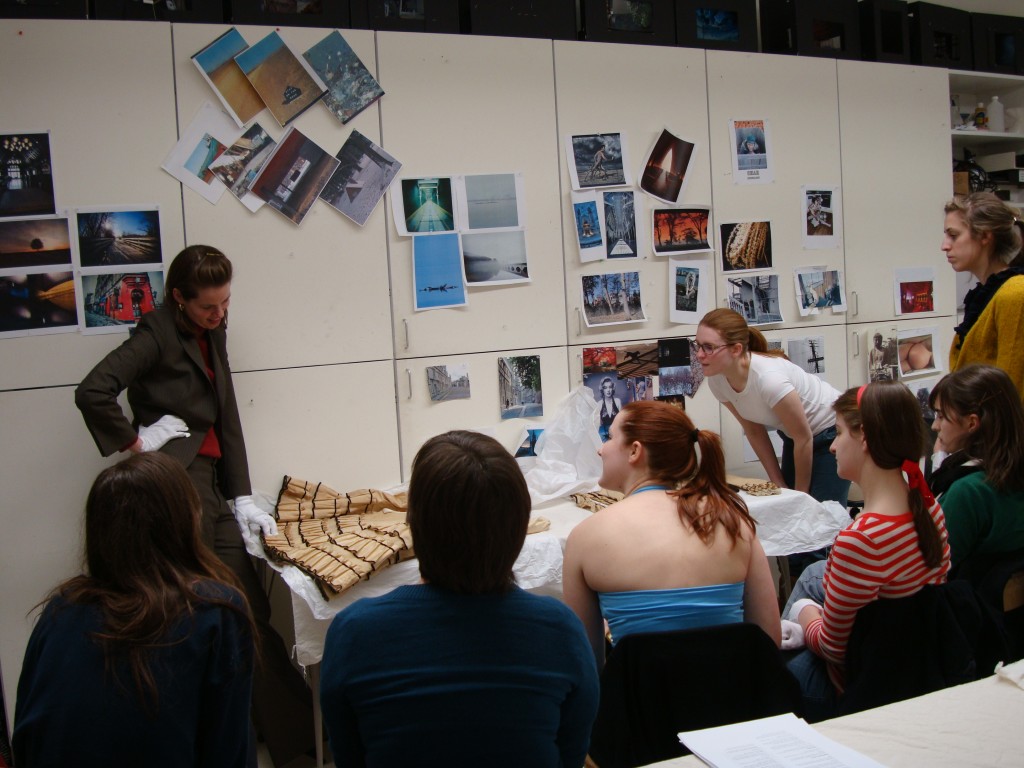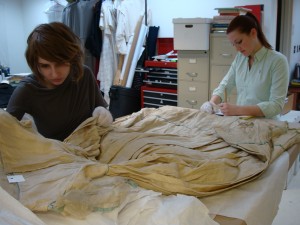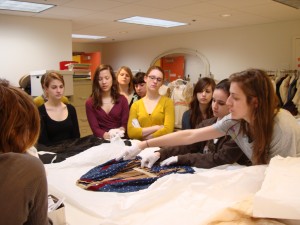February 18, 2010
Cataloging Workshop
Posted by Arden Kirkland under Presentation, Workshop | Tags: ArtStor, Brooklyn Museum, cataloging, Krick, Workshop |[11] Comments
It’s hard to believe, but our second workshop has already come and gone! On Friday, February 12th, we welcomed Jessa Krick to lead our workshop about cataloging of historic costume. Ms. Krick currently works with Historic Hudson Valley, and was formerly a Senior Research Assistant for the Costume Documentation Project for the Brooklyn Museum.
After a brief round of introductions, Ms. Krick shared her presentation entitled “Object Cataloging: Idea and Practice.” She provided some background about the Brooklyn Museum Costume Collection, and then described the process undertaken for the Costume Documentation Project. Her presentation included many images of objects selected as highlights of the project, and photographed and documented for ArtStor. She provided several very helpful examples of catalog entries for objects in the Brooklyn collection, to help guide our process.
Next we took a brief cookie break, and then returned for some hands-on work with object cataloging. Ms. Krick worked with a two-piece dress from our collection to develop a catalog entry, getting students involved along the way, both in terms of remembering the best practice she had indicated in her presentation, and examining the object in detail. The piece chosen was found to have been significantly re-styled for use as a theatrical costume before it was removed from the theatrical stock and placed in the historic collection. While this aspect was frustrating at times, this made it an excellent subject for thorough investigation.
In the days since Ms. Krick’s visit, we have already implemented some changes in our procedure, as inspired by her presentation. We have started cataloging the more recent objects in our collection, and plan to work backwards in time, as Ms. Krick explained they had done with the Brooklyn project. This is a very helpful approach, allowing all of us to take some time to perfect our cataloging technique with more familiar objects before moving on to the many complicated late nineteenth and early twentieth century pieces we have in the collection.
We all learned a great deal from Ms. Krick, and we’re very appreciative for the time she spent with us.
Now we have several weeks of cataloging and condition reporting ahead. Please “stay tuned” to see what objects we unearth in the coming weeks!


